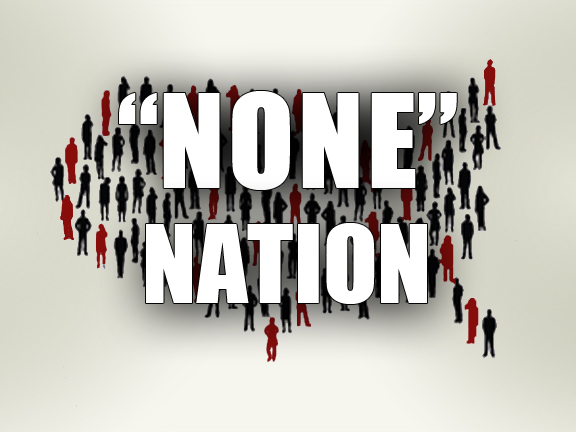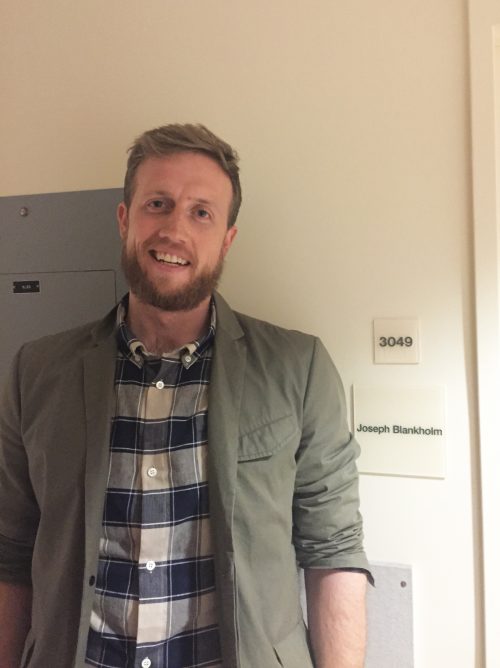In his wide-ranging interview with Dusty Hoesly, Wade Clark Roof both re-emphasizes the importance of the baby boomer generation and suggests some ways to think beyond it. In the second half of the interview, in particular, he offers two different narratives for understanding the boomers, their uniqueness, and their place in the history of American religion. Looking at each in turn, this short essay uses recent scholarship to build on Roof’s observations and point to some facets of the current sea change in American religion.
Roof’s first historical narrative culminates in a deadlocked polarization. He suggests that the 1960s were a time of upheaval, and he sees the conservatism of the 1980s and Generation X as a direct response. This story of antagonism is consistent with Robert Wuthnow’s account in The Restructuring of American Religion (1988). Throughout the 1980s, the cleavage between religious conservatives and liberals began to correspond to that between political conservatives and liberals. The 1990s inaugurated a period in which high levels of religiosity began predicting membership in the Republican party—with Catholics and Black Protestants as notable exceptions (Campbell and Putnam 2010:290-321). Religious antagonism that grew out of a backlash against the 1960s became so polarized that it began predicting political antagonism, as well.
Michael Hout and Claude S. Fischer (2002) narrate this polarization as one of the catalysts behind the rise of the religiously unaffiliated, or the so-called “nones,” who now comprise around a fifth of the American population (Funk, Smith, and Lugo 2012). The percentage of Americans with no religious affiliation doubled through the 1990s, jumping from 7 to 14% after remaining relatively stable for the two decades prior. Hout and Fischer explain this change in two ways. The first is demographic: more Americans than ever were raised with no religion in the wake of 1960s counterculture. In the second, they argue that the rise of the Religious Right led political moderates and liberals with weak religious attachments to disavow their religious affiliations.
Hout and Fischer show in a recent working paper (2014) that the “nones” reflect a reversal in a longstanding causal trend: political preferences now predict religious affiliation rather than vice-versa. Writing in American Grace in 2010, David Campbell and Robert Putnam agree with Hout and Fischer and argue explicitly that the increasing association of religion with conservative politics spurred a mass exodus from organized religion, especially among young people. In their view, these changes amount to no less than another restructuring of American religion in which the new poles of the spectrum are religion and the secular. Out of the polarization Roof describes between conservatives and liberals, a new polarization has arisen.
And yet, while these statistics might appear to show a growing antagonism between religious and secular Americans, it is important to remember that no religious affiliation does not mean nonreligious. Recent work on the nones has shown that they are a deeply heterogeneous group that includes the spiritual but not religious, unchurched believers, avowed nonbelievers, and those who only intermittently affiliate with a religion (Lim, MacGregor, and Putnam 2010). In acknowledging how capacious and even misleading the “religiously unaffiliated” label has become, we might wonder if its growth is symptomatic of a taxonomy that has failed to keep pace with restructuring.
Roof’s second historical narrative is supersessionary, and it underscores the challenge of distinguishing between the secular and the religious following this recent sea change. Roof endorses a kind of dialectical model of secularization in which “secularity breeds religious reaction, but the religious reaction is more secular than it would look like in an earlier age.” “Where is the religious? Where is the secular?” he asks rhetorically. “The secular is in religion; religion is in the secular.” Roof then admits that this phrasing is confusing but nonetheless accurate. Though I would question whether this process should be called “secularization,” my own research on organized nonbelievers and secular activism supports Roof’s cryptic formulation, as does other recent scholarship that considers the role of supersessionary narratives in fashioning the boundary between the secular and the religious (Fessenden 2007, Modern 2011, Yelle 2013).
There are clear examples of Americans whose very existence is a challenge to this boundary and who fit awkwardly in the available categories on religious surveys. Along with Alfredo García, a colleague at Princeton, I have built an original dataset that shows that there are roughly 1,400 nonbeliever communities in the United States. A minority of these groups even consider themselves religious, despite being avowedly non-theistic. Religious humanists, for instance, might claim affiliation with an Ethical Culture Society, a Society for Humanistic Judaism, or a Unitarian Universalist Church. They are, therefore, not “nones.” By contrast, many secular humanists and other kinds of nonbelievers, such as atheists, agnostics, and freethinkers, would consciously avoid calling themselves religious or claiming a religious affiliation, even though they might also consider themselves to be a part of a “morally intense community” of non-theists (Putnam and Campbell 2010:361).
Recent efforts by groups in the U.S. and the U.K. to found “godless congregations” have spurred controversy among observers and especially among nonbelievers who choose not to organize. Yet they have also tapped into a great deal of latent interest. For instance, in late 2012 the Humanist Community at Harvard and the American Humanist Association began partnering to found “godless congregations”—a term that many secularists would find an oxymoron. Emboldened by tremendous growth in their budgets, staff, and membership over the past decade, these organizations hope they can create spaces for religious belonging and even religious practice without religious belief, and usually without the term “religious.” Many involved in these groups see themselves creating hybrids of religion and the secular, and they pursue interfaith partnerships and invite believers of various stripes to attend their godless services. They are challenging us to ask whether these godless congregations are religious or secular, and in so doing, they are consciously trying to mend fences and to undermine the polarization of the secular and the religious.
What do religious belonging, believing, and behaving look like in a country in which a third of its young people have no religious affiliation and describe themselves using complicated negations like “spiritual but not religious,” “nonreligious,” and “nonbeliever”? Are they secular if they believe and behave religiously but do not belong? Or what if they belong but do not believe or behave? Who gets to decide whether something is secular or religious, and what are the stakes of that decision (Blankholm 2014)? Like Roof, I find this blurry boundary and the questions it raises central to understanding the present restructuring of American religion.
References
Blankholm, Joseph. 2014. “The Political Advantages of a Polysemous Secular.” Journal for the Scientific Study of Religion 53(4): 775-790.
Campbell, David E. and Robert D. Putnam. 2010. American Grace: How Religion Divides and Unites Us. New York: Simon & Schuster.
Fessenden, Tracy. 2007. Culture and Redemption: Religion, the Secular, and American Literature. Princeton, NJ: Princeton University Press.
Funk, Cary, Greg Smith, and Luis Lugo. 2012. “Nones” on the Rise: One-in-Five Adults Have No Religious Affiliation. Washington, D.C.: Pew Research Center’s Forum on Religion & Public Life. Retrieved November 24, 2012
Hout, Michael, and Claude S. Fischer. 2002. “Why More Americans Have No Religious Preference: Politics and Generations.” American Sociological Review 67(2):165.
———. 2014. “Explaining Why More Americans Have No Religious Preference: Political Backlash and Generational Succession, 1987-2012.” NYU Population Center Working Paper Series. Working Paper No. 2014-03.
Lim, Chaeyoon, Carol Ann MacGregor, and Robert D. Putnam. “Secular and Liminal: Discovering Heterogeneity Among Religious Nones.” Journal for the Scientific Study of Religion 49:4 (2010): 596–618.
Modern, John. 2011. Secularism in Antebellum America. Chicago: University of Chicago Press.
Wuthnow, Robert. 1988. The Restructuring of American Religion. Princeton, NJ: Princeton University Press.
Yelle, Robert. 2013. The Language of Disenchantment: Protestant Literalism and Colonial Discourse in British India. New York: Oxford University Press.



